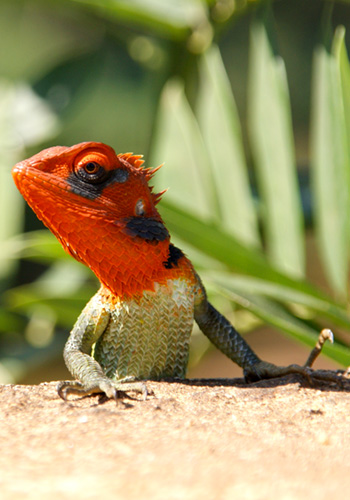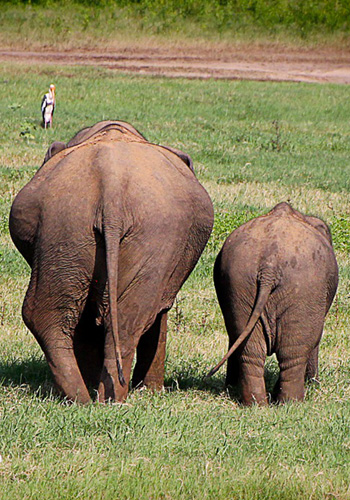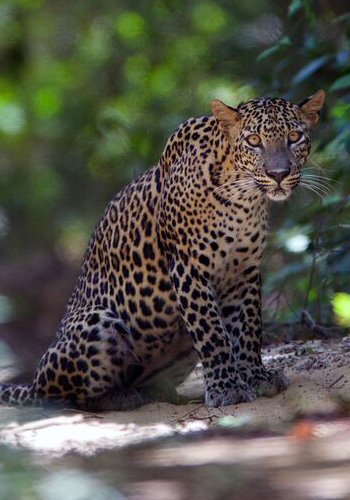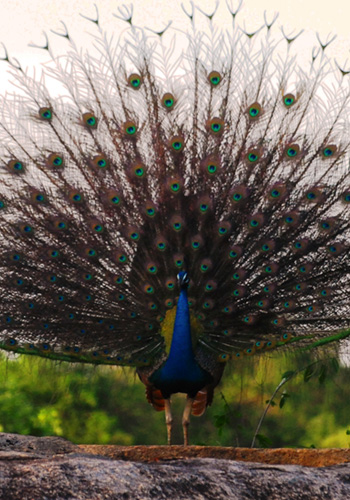
Wildlife Parks
When it comes to wildlife and nature, few islands in the world offer the variety, diversity and abundance of natural beauty and wildlife found in Sri Lanka. There are 22 state-owned National Parks in Sri Lanka, which fall under the class of protected areas administered by a Department of Wildlife Conservation, one of which is a UNESCO World Heritage Site, Sinharaja Rainforest. Yala is believed to be home to the highest density of Leopards found anywhere in the world. Our picks of must-visit National Parks are: Yala, Horton Plains, Wilpattu, Gal Oya, Minneriya and Udawalawe for a variety of species which include wild Asian elephants, leopards, crocodiles, sloth bear, wild buffalo, monkeys, majestic peacocks and hundreds of species of bird.
Gal Oya National Park
Established in 1954, the Gal Oya National Park serves as the main catchment area for the Senanayake Samudraya Reservoir and was largely isolated for over three decades due to the Island’s civil conflict. The Park is a natural habitat for large herds of elephants, and its protected status also ensures plenty of savannah grassland, forest and scrubland making it a popular feeding and bathing ground. Dawn or dusk boat safaris along the Senanayake Samudraya Reservoir reveal plenty of bird life and sightings of elephants that gather around the banks and chance sightings of elephants crossing banks. Gal Oya is also known for endless paddy fields, historic Buddhist monasteries, hermitages, shrines and temples. The nearby Buddangala Monastery features impressive carved statues adorning a long and iconic rock face.
Minneriya National Park
Minneriya National Park is best combined with a visit to Polonnaruwa, the closest of the cultural triangle cities to the park. The park’s tank is of historical importance, having been built by King Mahasen in the third century AD. Now renovated, this vast ancient tank irrigates the considerable area of the park, along with the whole of Polonnaruwa and is the focal point of the Park, serving as a dry season feeding ground for elephant populations dwelling in forests of Matale (near Kandy), Polonnaruwa, and Trincomalee. Large herds of Sri Lankan elephants are attracted to grass fields on the edges of the reservoir during the dry season, between May to October. Minneriya National Park is the largest known gathering place of Asian elephants in the world. In the months of August, September and October herds up to 300 elephants can be seen near the Minneriya Reservoir. Safari game drives are best done in the evening from around 4.00pm to avoid the heat and generally last two to three hours.
Sinharaja Rainforest Reserve
Designated a World Biosphere Reserve in 1978 and a UNESCO World Heritage Site in 1988, the reserve’s name translates to ‘Lion Kingdom’. Sinharaja Rainforest is located in the South’s interior, easily accessible from Galle. Classified as primary lowland tropical rainforest it has a treasure trove of endemic species in birds, flowers, butterflies, snakes, frogs, dragonflies, plants, insects, reptiles, mammals, amphibians and more. The rainforest is of particular interest to avid bird watchers; of Sri Lanka’s 26 endemic birds, 20 rainforest species can only be found within this rainforest, including the elusive red-faced malkoha, green-billed coucal and the Sri Lankan blue magpie. The rainforest has three entrances and a number of trails and waterfalls. The reserve is bordered by local villages to the south and a handful of large estates along the north. For generations, local people trekked through the forest from south to north to make their annual pilgrimage to Adams Peak. Local residents can often be seen collecting edible fruits, nuts, mushrooms and honey and a sugary sap collected from a local palm species which is converted into jaggery.
Udawalawe National Park
The area’s history dates back to the arrival of Indian Prince Vijaya, some 2,500 years ago, when his vessel washed ashore north side of the Puttalam lagoon. The area has a tropical savanna climate, from which it experiences a short dry season from June to September and a second dry season from January to March. The wet season occurs mainly between October and December. Long off the tourist map, Puttalam is popularly known to be a quieter and more secluded part of the island, with a kind and hospitality people and is conveniently close to Wilpattu National Park and the stunning beaches and sand dunes of Kalipitiya. Its largest city is Anamaduwa. Rocky outcrops, ancient temples, large lakes for kayaking and endless paddy fields make up the landscape here.
Wilpattu National Park
Wilpattu National Park, the largest wildlife sanctuary in Sri Lanka, offers up a heady combination of elusive wildlife, fascinating glimpses into history and some magical forest scenery and experiences. Best visited during the drought between May and September, Wilpattu, is a feast for the senses and comprises monsoon forests, sandy valleys, mangrove swamps and grasslands; a haven for the animal kingdom. The National Park is home to some 347 inland vertebrate species, which includes 23 species of fresh water fish, 17 species of amphibians, 57 species of reptiles, 204 species of birds, and 41 species of mammals. They share the famous ‘villus’ that are natural water basins in the form of a depression, that dot the Park.
A game drive either early morning or late evening offers the best chance to view majestic elephants, or eye-catching leopards as they enjoy a less commercial domain in comparison to the islands more popular National Parks.
Yala National Park
Located 300km southeast of Colombo, Yala National Park, the second largest in the country, is one of the most popular destinations in South Asia for tourists, naturalists and wildlife enthusiasts alike. Home to the elusive Asian leopard, sloth bear, elephant as well as hundreds of endemic and migratory bird species, Yala is a biodiversity hotspot like no other. The 378-square-mile park is divided into five blocks, two of which are open to the public. Given its location in the dry semi-arid climatic region of southeastern Sri Lanka bordering the Indian Ocean, with rainfall limited to the northeast monsoon, Yala is home to a variety of ecosystems – from moist monsoon forests to freshwater and marine wetlands. The sanctuary is considered a conversation haven for a number of endangered species including the Sri Lankan leopard, the Sri Lankan elephant and some aquatic birds. Yala is a highly sought after destination for birdwatchers from around the world. Of the 215 species of bird found here, six are endemic to the island. Apart from the animal attractions, Yala is also home to at least two pilgrim sites whose origins can be traced back to ancient Sri Lanka.






